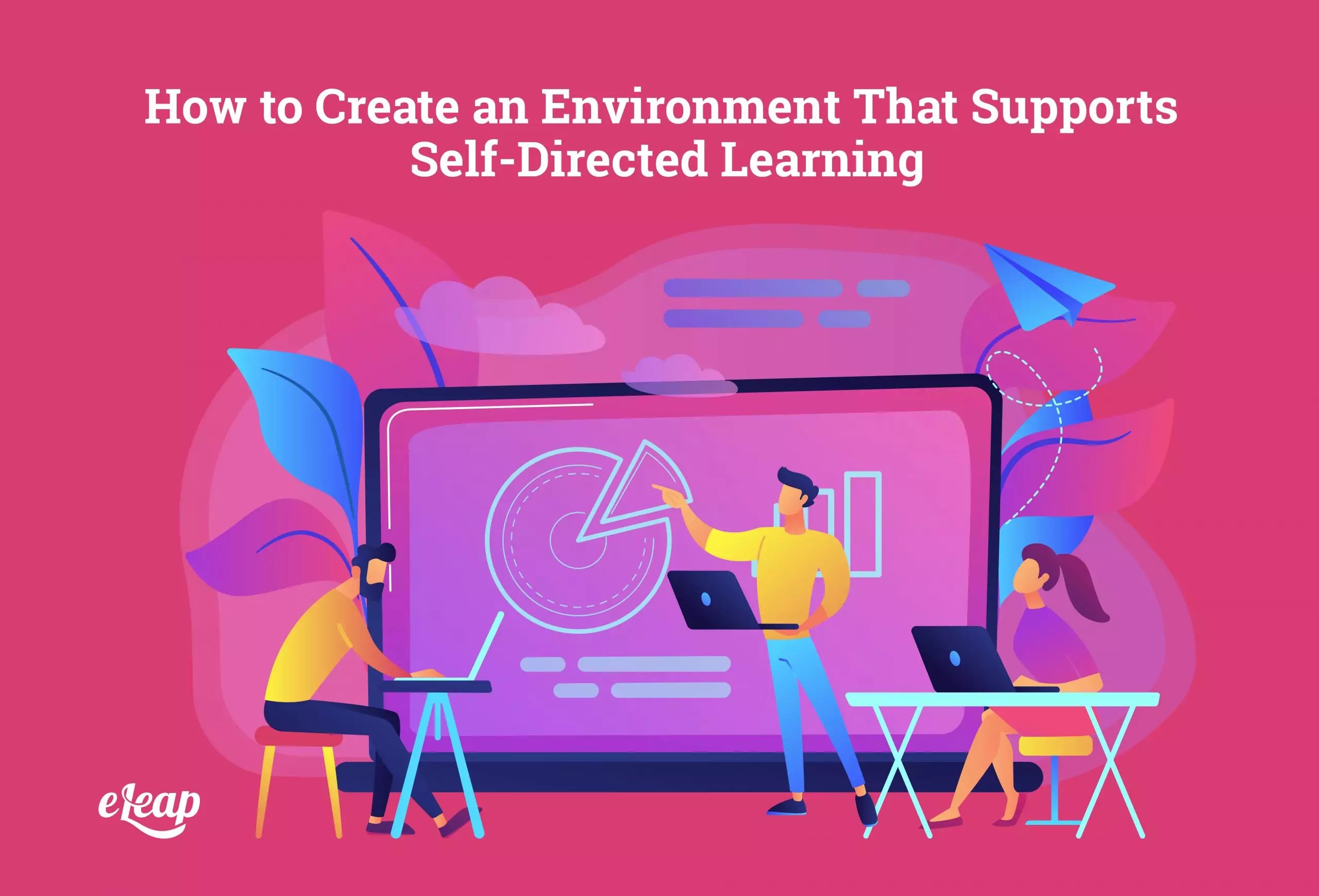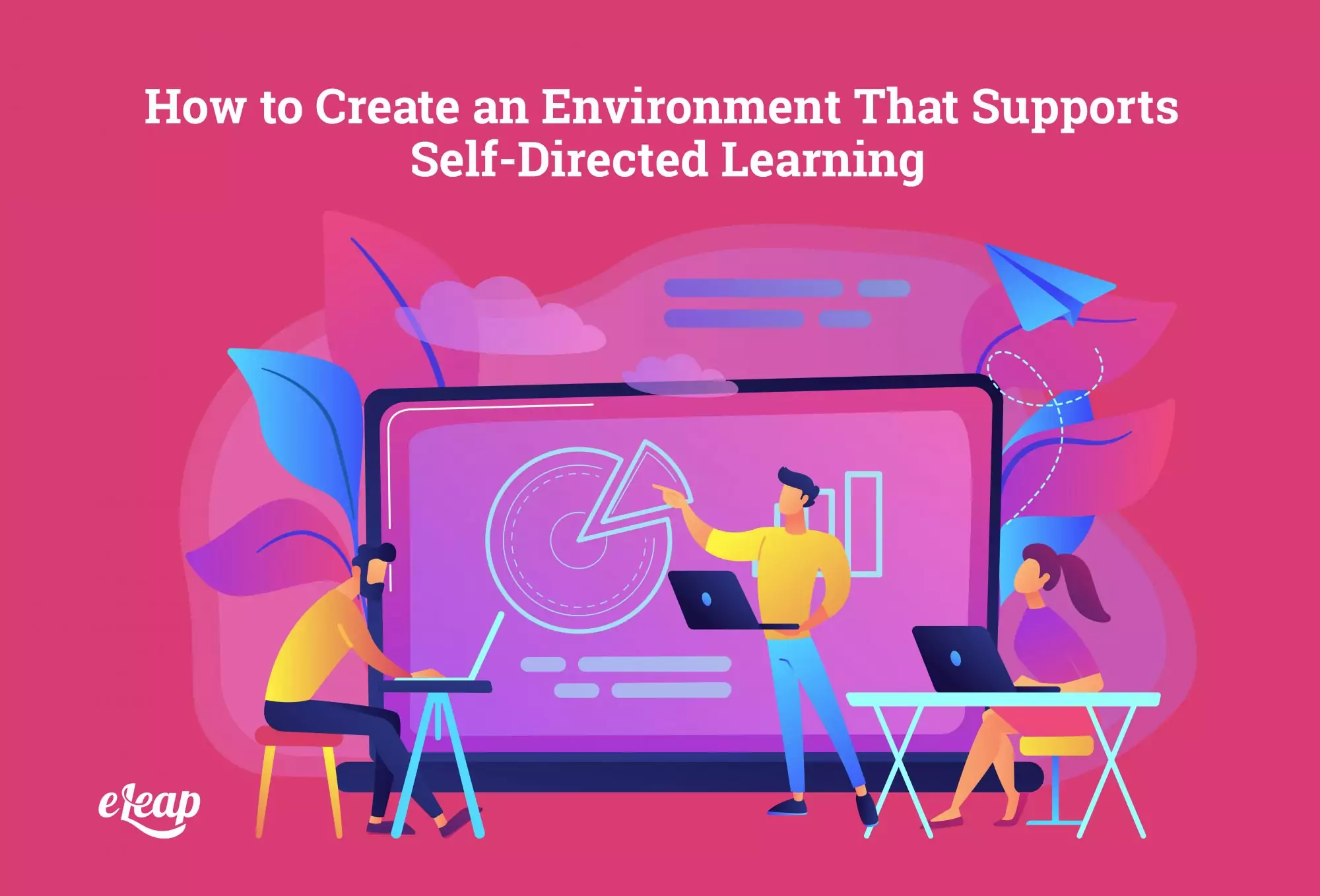How to Create an Environment That Supports Self-Directed Learning

Are you striving to create a sustainable learning culture within your organization? It can be quite challenging. One of the most important supports for that culture is self-directed learning, or SDL.
Self-directed learning can drive numerous benefits and support L&D success across your initiatives. It can also lead to several other important benefits. However, creating an environment that supports SDL is not as simple as many assume. In this post, we will discuss what HR professionals, training managers, and even the C-suite should know.

What Is Self-Directed Learning?
We should begin with the basics – what is self-directed learning? Most of us are familiar with the concept, if not the name. Have you ever decided to Google something to learn more about it without being required to do so? That’s self-directed learning. Have you ever picked up a hobby or started a project around the house and needed more information about it? That is SDL.
However, self-directed learning also occurs in more formalized settings. For instance, if you allow learners to move at their own pace through L&D content, or choose which topics they want to learn about within your LMS, those are both examples of SDL in action.
What Are the Benefits of Self-Directed Learning?
To understand why it is critical to create an environment that supports SDL, it’s necessary to understand the benefits it offers. These include the following:
- Better Alignment with Learners: While young students benefit more from instructor-paced learning, adult learners are better suited to self-led learning. That reduces resistance and improves information retention.
- Better Relevance: Who knows your learners’ needs better than they do? With self-led learning, your learners naturally gravitate toward the most relevant content first.
- Better Motivation to Learn: When you remove the hindrance of artificial learning guidance, adult learners are more motivated to pursue learning in general, but in particular information that allows them to compete with others for higher positions.
Those are just some of the benefits offered by SDL. However, to begin seeing them, it is important to create an environment that supports self-led learning in the first place. How do you do that?
Make Sure Your LMS Supports It
The first step is to make sure that your learners can actually take a self-directed approach. Take a long, hard look at your Learning Management System and its structure. Are learners free to choose whatever module they need? Or are they forced to follow a specific learning path? If there is an artificial order imposed, find ways to remove it. If you cannot, then SDL will be out of reach, at least through the learning management system.
Get Execs Involved
To create an environment that supports self-directed learning, you’ll need to get the C-suite and management involved. This is critical, because your leaders set the tone for the entire organization. You can talk about SDL endlessly, but if your leaders denigrate the idea or simply fail to take it seriously, you can expect that attitude to trickle down to your learners.
How do you get higher-ups on board with self-directed learning? Often, it simply requires discussing it with them. Talk about its benefits, discuss the advantages, highlight how it uplifts both the organization and individual learners. If necessary, get them involved in the learning process themselves so they have firsthand experience with SDL versus other options.
Explore All the Implications
There is much more to self-directed learning than just employees being free to follow their own path through LMS modules. You must explore all the implications, including:
- Allowing learners to choose when they complete modules.
- Allowing learners to schedule their own activities.
- Allowing learners to branch out with relevant, curated content.
- Allowing learners to choose the technology that best suits their needs, including webinars, eLearning modules, and more.
- Allow learners to engage in social learning with others.
Get Feedback
It’s not enough to set out to create the right environment for self-directed learning. You need to course-correct along the way. Sometimes, an idea will seem good on paper, but it fails miserably when enacted. The only way to ensure that you can correct your course in time is to solicit feedback from the very people you are trying to support.
Come right out and ask your learners:
- If they feel they are supported in choosing their own learning path.
- If they have suggestions for additional things that could be done.
- If there are things that are not working for them within the system.
Regular feedback allows you to improve the SDL experience and propel learners to new heights. It’s about engendering success in different forms while constantly growing and evolving.
Empower Learners to Set Goals
In most L&D initiatives, goals are set by HR, but that can be artificial and stymying. Instead, consider allowing your learners to set at least some of their goals. In this approach, the tasks they need to perform during their daily work, or their responsibilities when moving to a higher position, will become the curriculum that they follow. This creates a natural flow and ensures relevance, accuracy, and interest.
Encourage learners to set an appropriate timeline for reaching those learning goals, too. The purpose here is to create steppingstones, with one goal building on the previous and next, moving the employee forward while ensuring they have a strong foundation for success.
Motivation and Growth
The goal of L&D initiatives should always be growth and development. It’s about more than just ticking off boxes indicating an employee is current with mandatory corporate training. It’s about supporting them in their career and providing the resources necessary to become their best selves. Sometimes, that means allowing them to chart their course. Self-directed learning is an ideal option for this and provides motivation, growth, and engagement in ways that cannot be achieved through other methods.
Have you implemented SDL in your organization? What challenges and successes have you experienced? Share them with us below.